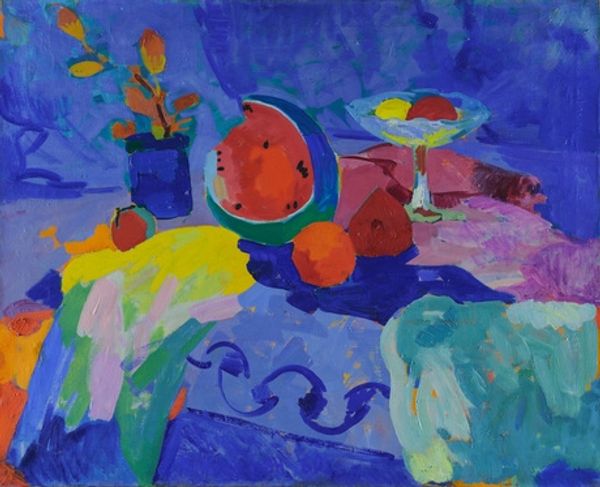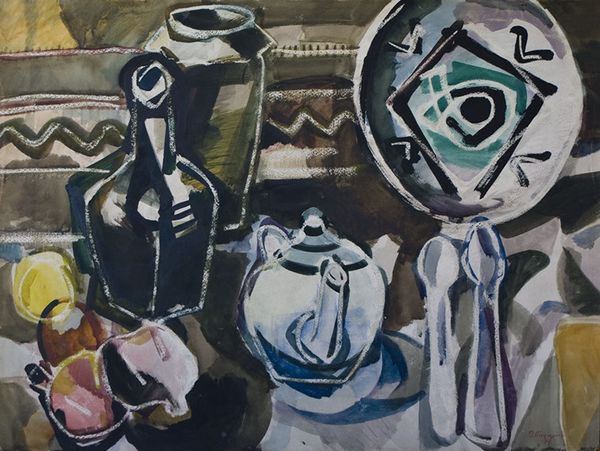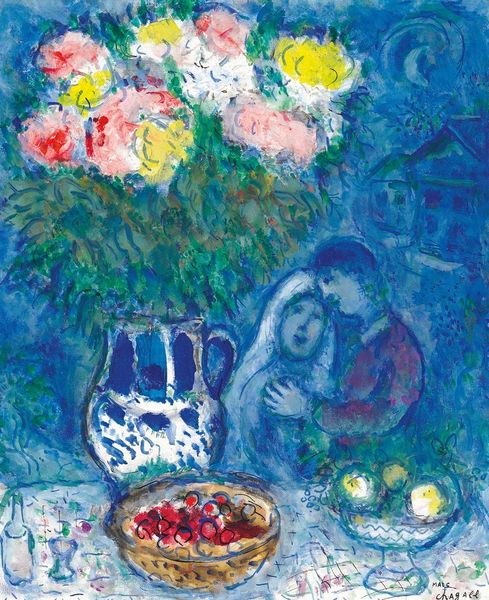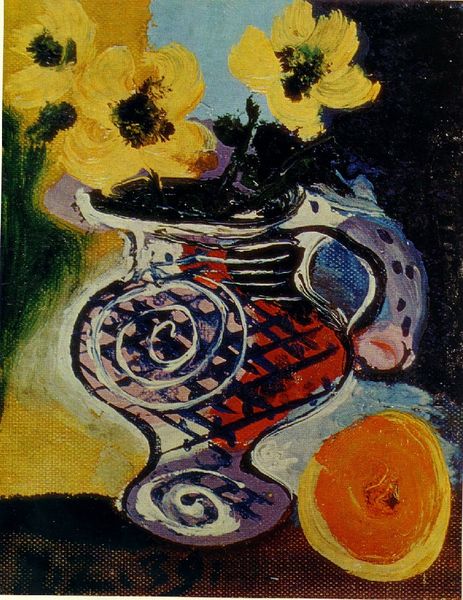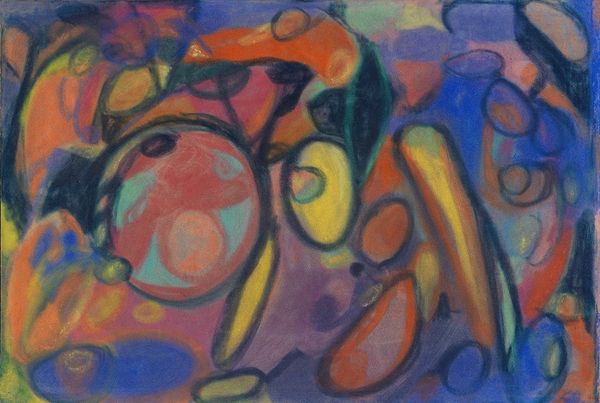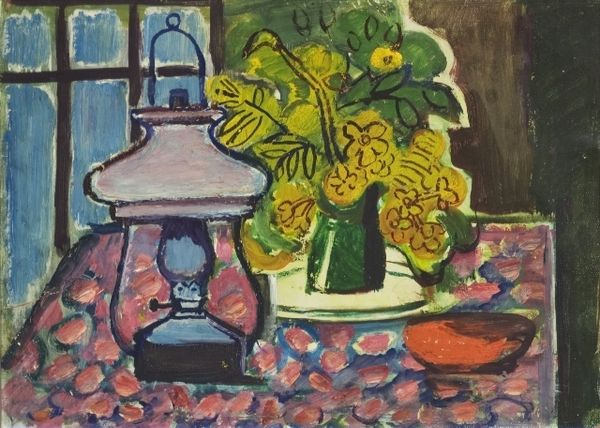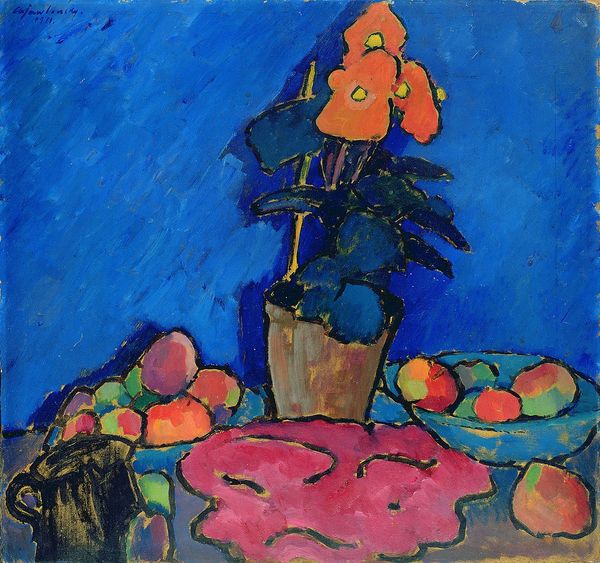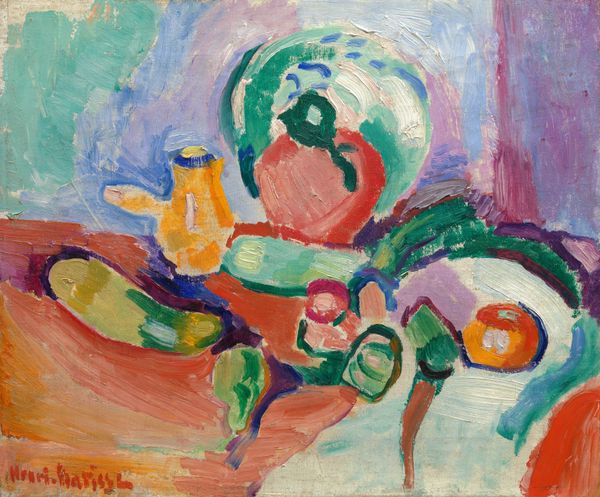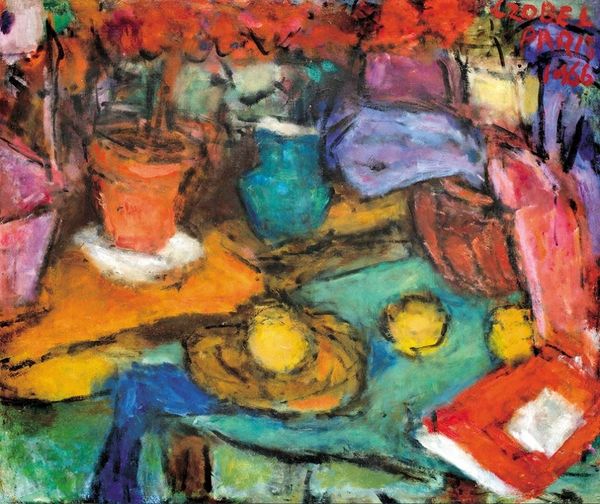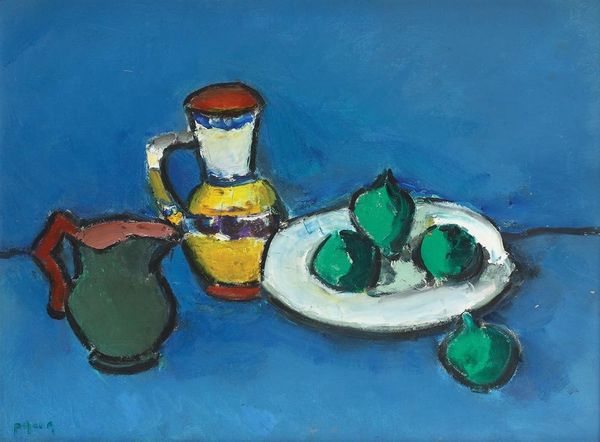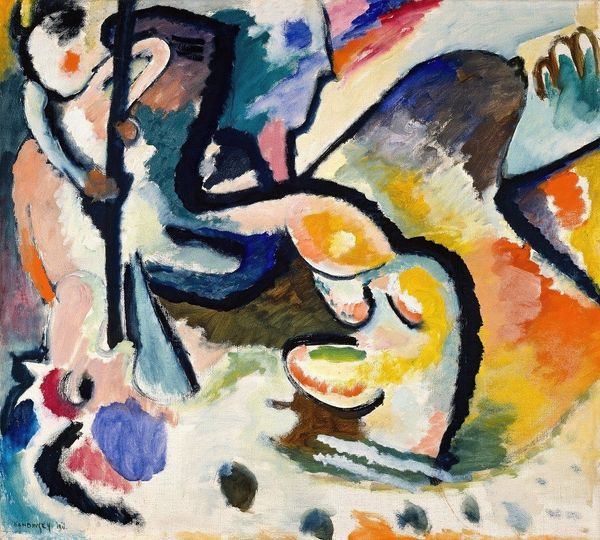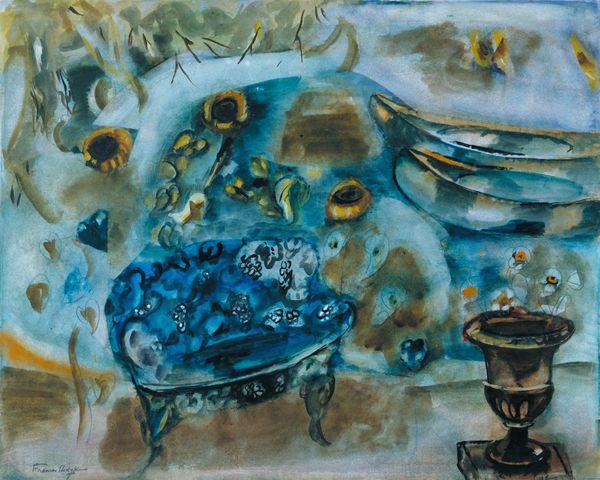
painting, oil-paint, impasto
#
fauvism
#
painting
#
oil-paint
#
impasto
#
naive art
#
painting art
#
watercolor
Copyright: Public domain US
Curator: Henri Matisse painted "Still Life with Blue Tablecloth" in 1909. It’s currently housed here at the Hermitage Museum. Editor: The immediate effect is striking, almost dizzying! The vibrant blue pattern seems to swallow everything whole. It's boldly flattened, undermining any sense of depth one might expect from a still life. Curator: The Fauvist movement, to which Matisse belonged, reveled in the expressive possibilities of color, challenging academic conventions and influencing the rise of galleries dedicated to modern art. Can you describe how that movement comes through in this work? Editor: Precisely. See how he uses color to define shape instead of tone? The unmodulated patches of blue are pure sensation. Look closely and notice how little attention he paid to realistic shading. That green vase simply IS green! He wasn't interested in representing how light falls on it in reality. Curator: True. What’s intriguing is how that blue pattern references textile traditions—specifically from North Africa, a place that fascinated many artists in France at that time. This wasn’t mere decoration; it suggested a cultural engagement, albeit often filtered through a colonial lens. These images helped shape French audiences views on North Africa. Editor: I concede that this background pattern creates this sense of place. It creates a vibrant backdrop, but consider the relationships he builds between these shapes, especially the curvilinear aspects. It is this balance that engages us. Curator: Balance... and disruption. He isn’t passively recording the look of these objects, he is using their image to convey an experience to his public. These artists hoped for museums to see them as revolutionaries who defied all academic values. Editor: Agreed. We see here his subversion of what still-life painting used to be. His technique pushes you away from interpreting it as still-life. Curator: Absolutely. By displaying the artwork in a museum such as the Hermitage, we provide context to this legacy that once created a rift. Editor: In this flattening, in this daring play of hue, we see modern art finding its unique pictorial language. Curator: An entry in an ongoing dialogue between art and its public.
Comments
No comments
Be the first to comment and join the conversation on the ultimate creative platform.
